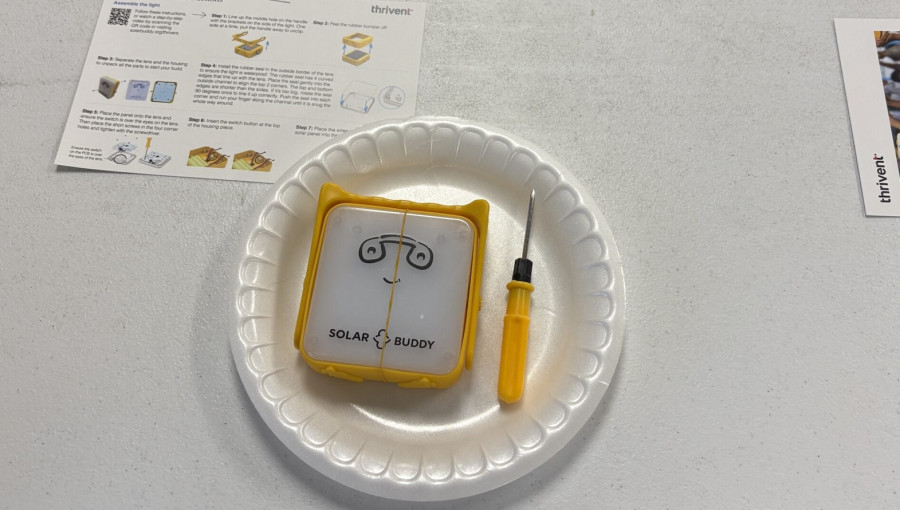During a community service day at Cross of Christ Lutheran Church in Broomfield, Colorado, participants made solar-powered lights to send to energy-poor communities worldwide. The initiative, spearheaded by SolarBuddy, aims to alleviate energy poverty by replacing hazardous kerosene lamps with safe, solar lighting options for children in off-grid locations. This project not only provides a sustainable solution to light up studies and dreams but also fosters connections and empathy among those who create and receive these solar lights. With its proven impact and collaborations, SolarBuddy is creating brighter futures for millions.
SolarBuddy stands as a beacon of hope in the fight against energy poverty, delivering innovative solar-powered lights to children in off-grid communities across Australia, the Pacific Islands, Southeast Asia, and beyond. Founded with a simple yet profound mission, this global impact organization has illuminated millions of young lives by providing safe, reliable solar devices that replace dangerous kerosene lamps, reducing health risks from fumes and fires while enabling education after dark. Imagine a child in a remote village, once confined to shadows at night, now able to study, read, or dream under the glow of a portable solar buddy — it’s a game-changer that empowers futures and fosters sustainability.
As someone passionate about clean energy solutions, I see SolarBuddy’s work as a perfect synergy of technology and compassion. The heart of SolarBuddy’s project lies in its hands-on engagement model, where participants worldwide assemble the solar lights during team-building events, infusing each device with personal touches like handwritten letters of encouragement. These “SolarBuddy LIVE” programs, often hosted by corporations, schools, and nonprofits, not only produce thousands of lights but also educate attendees on energy poverty’s global toll — affecting over 700 million people without electricity. Partnerships with organizations like Autodesk, which donated software and expertise, and Good Neighbours Australia, amplifying distributions in Indonesia and Vietnam, have supercharged the initiative’s reach.
From my vantage in the cleantech space, this grassroots approach turns passive support into active impact and creates lasting connections between donors and recipients. What truly sets SolarBuddy apart is its measurable, life-altering outcomes: recipients report safer homes, improved school performance, and even economic boosts as families save on fuel costs. In 2025 alone, the project has scaled through student programs like PowerUP, where kids build and connect with peers in energy-poor regions, building empathy alongside skills in solar tech. Backed by endorsements from foundations like the Kokoda Track Foundation, SolarBuddy’s expansion into new areas like the Philippines underscores its adaptability amid climate challenges.
As clean energy investments hit records — think $386 billion globally this year — initiatives like this remind us that solar isn’t just about grids or EVs; it’s about equitable access that lights up human potential. If you’re inspired by sustainable innovation, join the movement — assemble a light, write a note, and help illuminate the path to energy equity for generations to come. They don’t offer them for sale to us in the US, but I did a search on AliExpress (a Chinese marketplace like eBay) and found you could get 12 motion lights for under $5. These are exactly the same use case, but they were the least expensive option. A better but more expensive option is the solar lantern below available for under $10. This is not a sponsored link, just an example light I found interesting. It can be charged by solar or its USB port and it can also charge a cell phone or other USB device.
I enjoyed learning a little more about solar lights, and these devices are a great way to provide light (and a way to charge your small devices if they include a USB output port) in areas without an affordable and reliable electrical grid. In many parts of the world, the cost of providing electricity with diesel generators is high and not reliable. Fuel shipments don’t always arrive on time, especially if it is an area with some sort of military conflict. But solar chargers are a reliable

